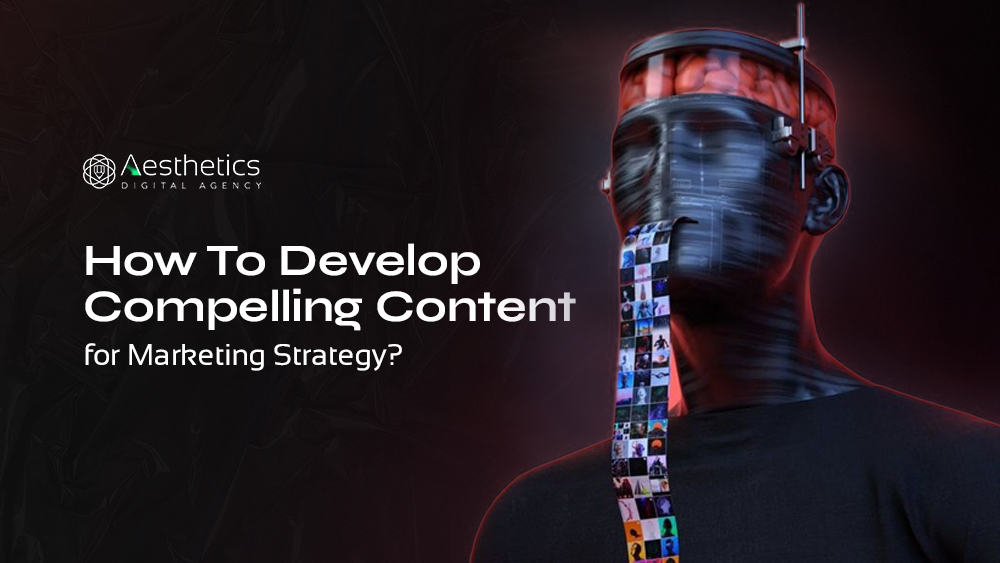Content marketing is an evolving field, and what may have worked in the past might not be as effective today. As market trends, consumer preferences, and technology continue to change, it’s crucial for businesses to periodically review and update their content strategy. This reassessment ensures that your approach aligns with the latest industry developments and engages your target audience effectively.
Whether you are a beginner exploring content marketing or an experienced marketer, this ongoing evaluation helps you identify areas for improvement and innovation. It allows you to adapt to emerging trends, incorporate new technologies, and refine your messaging to maintain relevance with your prospects and customers.
If you find it challenging to prepare for the upcoming year or seek new ideas to incorporate into your plan, continue reading. In this article, we will discuss the following:
- The concept of content strategy
- The significance of having a content marketing plan for your business
- Outline the necessary steps to develop your strategy.
What is Content Strategy?
A content strategy acts as a roadmap for the entire lifecycle of content within a business. This includes planning what content to create, how and where to publish it, managing the content effectively, and establishing guidelines for its governance. The ultimate aim is to not just create content for the sake of it but to strategically use content as a tool to engage a target audience.
For instance, your business goals revolve around increasing brand awareness. In such a scenario, a strategic content approach might involve prioritizing Search Engine Optimization (SEO) to enhance your website’s visibility on Search Engine Results Pages (SERPs). While some new entrepreneurs may perceive content strategy as optional in the early stages, the creation of high-quality content plays a key role in establishing trust with new audiences and long-term success.
As 82% of marketers are actively investing in content marketing, developing a robust content strategy becomes imperative for staying competitive within your industry.
How to Create a Content Marketing Strategy?
Now, let’s get into the details of creating a content marketing plan. Understanding the details of creating an effective strategy is pivotal for achieving your business goals. In the following sections, we will explore the key components of a successful content marketing plan, providing insights and actionable steps to guide you through the process.
- Explain Your Goal
Why are you creating a content marketing plan? What’s your goal in producing content and developing this plan? These questions form the heart of a valuable content strategy. Take a close look at your overall business objectives, review meeting notes, and consider input from your team. Additionally, conduct individual research to ensure that your goals are not only clear but also sustainable in the long run.
Example:
For example, you are working for a tech startup, and your aim is to enhance brand visibility and establish thought leadership in your industry. Your overarching business goal is to increase market share and become a recognized authority in the tech space.
In team meetings and discussions, you gather insights from various departments – marketing, sales, and product development. Marketing emphasizes the importance of creating engaging and educational content to attract potential customers. The sales team stresses the need for content that addresses common customer queries and pain points.
During your solo research, you explore industry trends, competitor content strategies, and audience preferences. You discover that there is a growing interest in informative video content within your target audience.
Now, combining these inputs, your content marketing plan’s primary goal becomes clear: to create a series of educational and visually appealing video content pieces that address customer pain points and contribute to gaining a larger market share in the tech industry.
- Work On Persona Research
To create an effective plan, it’s essential to precisely identify your content’s intended audience, commonly referred to as your buyer persona. The process of defining your buyer persona is a crucial aspect of the planning phase in content strategy. It involves researching and understanding the characteristics of the individuals you aim to reach with your content. This could include factors such as age, gender, location, interests, challenges, and buying behaviors.
Understanding your target audience enables you to generate content that is more pertinent and also valuable, increasing the likelihood that they will engage with and act upon it.
Example:
Let’s continue with the example of the tech startup.
Taking a closer look at the business goal of increasing brand visibility, the team identifies that their ideal customer is a tech-savvy professional interested in staying updated with the latest industry trends and innovations.
Combining these findings, the buyer persona is refined to:
- Tech enthusiast professional working in mid-sized tech companies
- Aged 25-35
- Interested in industry trends
- Seeking solutions to common challenges.
This detailed understanding informs the content marketing plan, which now focuses on creating a series of visually appealing and informative videos addressing specific pain points faced by this target audience.
- Conduct a Content Audit
In the early stages, many brands start their content efforts with blog posts or social media. If you’re considering exploring different formats, a content audit is a useful step to evaluate both your top-performing and lowest-performing content. For established businesses, it’s essential to review past content marketing endeavors and assess the results from the previous year.
Identify topic and formatting gaps during the content review. Take note of page titles, content formats, word counts, and provide a summary of each piece of content. This information is valuable for pinpointing areas that need improvement.
Evaluate content for quality and relevance. Analyze whether your content aligns with what matters most to your audience. This insight should guide your next steps in content creation.
Explore opportunities for repurposing content. Repurposing can take various forms, such as transforming popular blog posts into YouTube videos, ebooks, or even launching a podcast.
Examine your team’s content creation process. A strategic workflow significantly influences idea generation, publishing, and overall content quality. Identify any inefficiencies in your workflow through the audit.
Utilize the content audit findings to make changes in the upcoming year and set new goals. This is also an opportune time to align your team’s objectives with the broader goals of your organization. Whether you are just starting or have an established content strategy, a content audit serves as a valuable tool to understand what resonates with your audience and generate fresh content ideas.
Example:
Let’s continue with the example of the tech startup. Conducting a content audit reveals that the blog posts focusing on technological advancements and problem-solving for tech professionals consistently perform well. However, there’s a noticeable gap in video content, an area identified as a preference through individual research.
The audit also highlights that the current content workflow is somewhat disorganized, resulting in occasional delays in publishing and inconsistent quality. Recognizing these bottlenecks, the team decides to assign specific roles and responsibilities to ensure a more efficient content creation process.
Identifying opportunities for repurposing content, the team decides to turn the most popular blog posts into short video snippets for platforms like YouTube and social media. Additionally, they consider compiling a series of these videos into an ebook to provide a comprehensive resource for their audience.
- Select a Content Management System
Choosing a content management system (CMS) is a critical decision in content marketing. A CMS serves as a centralized platform that streamlines various processes related to content, including creation, publication, and analytics.
Content creation involves generating and developing the material that you intend to share with your audience. This could be in the form of blog posts, articles, videos, or any other content type relevant to your strategy.
Content publication refers to the process of making your created content available to your audience. A CMS allows you to manage the scheduling and distribution of your content across different channels, ensuring a seamless and organized approach to content release.
Content analytics involves tracking and analyzing the performance of your content. This includes monitoring metrics such as page views, engagement, and conversion rates. A CMS with robust analytics features allows you to make data-driven decisions for future content strategies.
- Decide on the type of content you wish to produce.
There is a wide array of content options available, ranging from written materials like ebooks and blog posts to audio content such as podcasts. Developing a successful content strategy requires a delicate balance of decision-making, data analysis, and a willingness to take calculated risks, all of which are tested in this step.
Different personas and goals may necessitate diverse types of content. Scrutinize your ultimate objectives and the specific actions you intend each persona to undertake. Subsequently, work backward to select the most suitable content types for each goal and user.
When assessing your content production resources, ask critical questions like the size of your team, the available time for content creation, the skill set of your team, the types of content that may require training or outsourcing, and your content budget. These considerations will help you narrow your focus and establish a sustainable content strategy.
Choose the right topics, formats, and channels for your content. Utilizing your buyer personas, select a set of high-level topics to concentrate your content on. Then, based on your audience and topic choices, refine your selected content formats and channels.
Once these pivotal decisions about your content strategy are made, you’ll be well-prepared to get into the finer details of content creation.
Example:
Assessing their available resources, the tech startup acknowledges that while they have a small but skilled content creation team, there’s limited experience in video production. Considering this, they choose to start with video shorts, ensuring a manageable workload while allowing them to gradually build expertise in video content creation.
In terms of topics, the team selects high-level themes related to emerging tech trends, innovative solutions, and common challenges faced by their target audience. These topics resonate with their buyer personas and contribute to the startup’s positioning as a thought leader in the tech industry.
- Brainstorm Ideas
Generate content ideas by leveraging your content audit, persona research, and business goals. Conduct a swift review of this information before brainstorming to keep these insights at the forefront of your mind. Additionally, utilizing tools like BuzzSumo and Feedly can be invaluable for tracking trending topics in your industry and discovering new content ideas.
Example:
In the context of our tech startup example, as the team engages in brainstorming content ideas, they also consider incorporating video content to diversify their strategy and cater to the preferences of their tech-savvy audience.
For a video content idea, the team decides to create a series of tech tutorials, focusing on providing step-by-step guidance on using their innovative products or addressing common challenges faced by their audience. This aligns with the in-depth technical insights valued by one segment of their audience while also catering to the broader interest in visual and practical content.
- Publish and review your content.
Your marketing plan should extend beyond the content types you’ll generate; it should also encompass how you’ll structure and manage your content. Establish a content calendar. With the assistance of an editorial calendar, you’ll be well-positioned to publish a well-rounded and diverse content library on your website. Subsequently, create a social media content calendar to effectively promote and manage your content across various platforms.
Revise your content strategy using data insights. Don’t merely gather and assess your data; integrate it into your content strategy. Check your Key Performance Indicators (KPIs) for effectiveness, conduct marketing experiments, and use your data to fine-tune your strategy. This analysis proves valuable when seeking support from stakeholders. Securing resources for testing innovative ideas can be challenging, but data-driven insights can substantiate your case for experimenting with new concepts in your content strategy.
For Example:
Considering their decision to create tech tutorials as part of their video content, the content calendar helps them schedule the release of these tutorials at strategic intervals. This ensures that their audience receives a consistent flow of valuable, instructional content while avoiding overwhelming them with too much information at once.
Simultaneously, the team establishes a social media content calendar to complement their website content. For instance, when they publish a new blog post, the social media content calendar outlines a schedule for promoting the post on platforms like Twitter, LinkedIn, and Instagram. This systematic approach maximizes the visibility of their content, reaching a broader audience across different channels.
To further refine their strategy, the team conducts marketing experiments, such as A/B testing different content formats or publishing schedules. Suppose they experiment with releasing video shorts on a specific day or time. In that case, they can use data insights to assess the impact on audience engagement and adjust their social media and editorial calendars accordingly.
How Can Aesthetics Digital Help?
Are you in search of a cutting-edge digital marketing firm to assist you in crafting engaging content? Look no further than Aesthetics Digital! Our content marketing approach is designed to set you apart from rivals, boosting your website’s traffic, enhancing conversions, and generating substantial revenue.
We provide custom content strategy development services to effectively convey your brand narrative to a global audience. If you have any uncertainties, feel free to reach out, and our team of experts will provide guidance on having a successful digital marketing plan.







